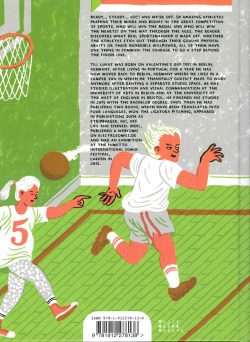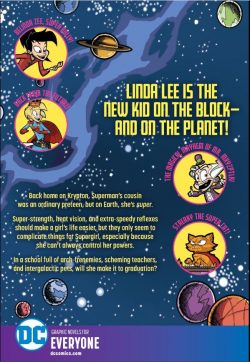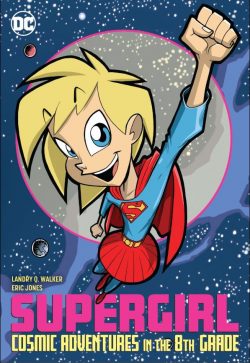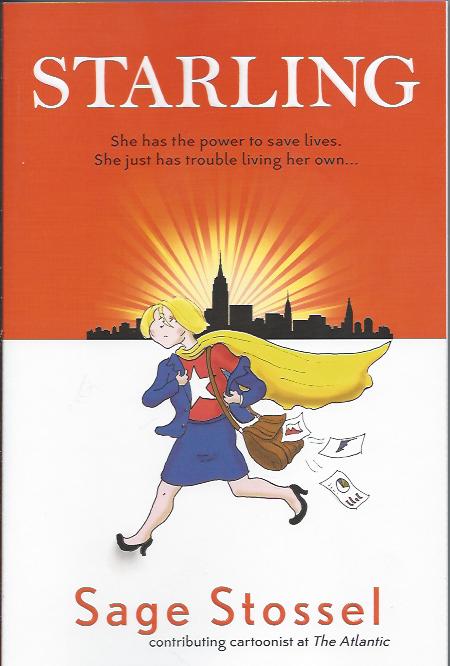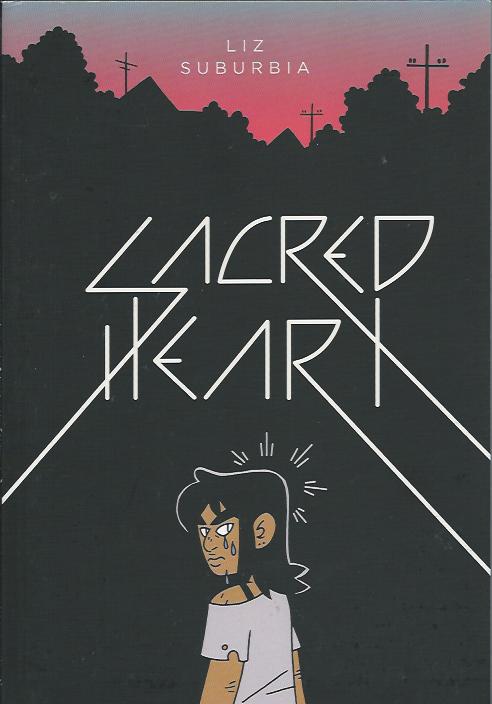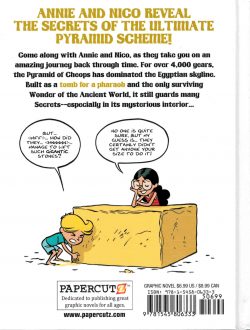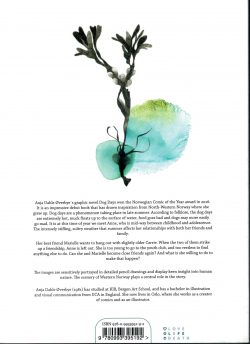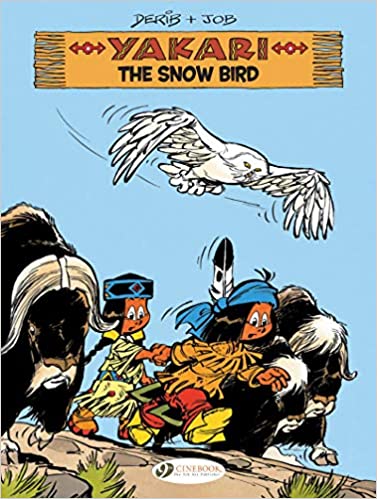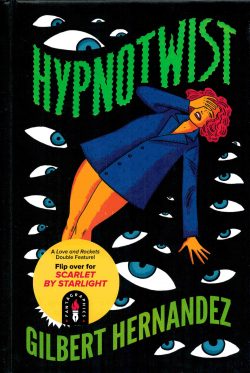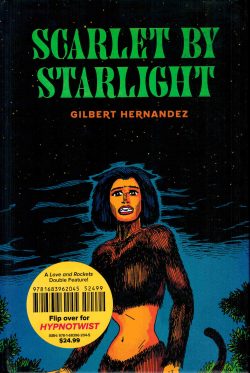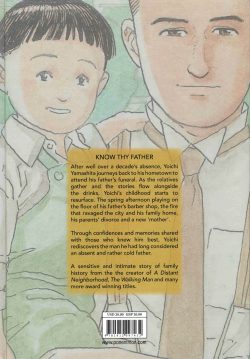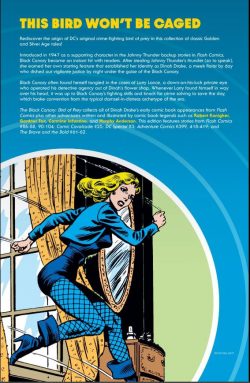
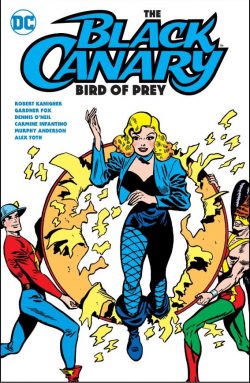
By Bob Kanigher, Gardner Fox, Denny O’Neil, Carmine Infantino & Joe Giella, Murphy Anderson, Alex Toth & various (DC Comics)
ISBN: 978-1-7795-0908-6 (TPB)
Black Canary was one of the first of relatively few female heroes to hold a star spot in the DC universe, following Wonder Woman, Liberty Belle and Red Tornado (who actually masqueraded as a man to comedically crush crime – with a couple of kids in tow, too!). The Canary predated Merry, the Gimmick Girl – remember her? No, you don’t – and disappeared with most the majority of costumed crusaders at the end of the Golden Age: a situation that was not remedied util her revival with the Justice Society of America in 1963.
She was created by Bob Kanigher & Carmine Infantino in 1947, echoing the worldly, dangerous women cropping up in a burgeoning wave of crime novels and on the silver screen in Film Noir tales better suited to the wiser, more cynical Americans who had just endured a World War and were even then gearing up for a paranoiac Cold one…
Clad in a revealing bolero jacket, shorts, fishnet stockings and high-heeled pirate boots, the devastating shady lady who looked like Veronica Lake even began life as a thief…
This superb collection capitalises on the character’s recent screen incarnations, gathering her admittedly short run of tales from Flash Comics (#86-104, August 1947-February 1949), Comics Cavalcade #25 (February/March 1948), plus two adventures that went unused when the comicbook folded: one of the earliest casualties in the wave of changing tastes which decimated the superhero genre until the late 1950s. Those last only resurfaced at the end of the Second Great Superhero Winnowing and were subsequently published in DC Special #3 and Adventure Comics #399 (June 1969 & November 1970 respectively).
Also intriguingly included are two stellar appearances from Brave and the Bold #61-62 (September & November 1965), teamed up with JSA team-mate Starman as part of a concerted yet ultimately vain editorial effort by Julius Schwartz to revive the Golden Age squad of champions then comfortably situated on parallel world Earth-2.
Best of all is the re-presentation of a 2-part thriller from Adventure Comics #418-419 (April-May 1972) following her migration to “our†world to replace Wonder Woman in the Justice League of America.
After years languishing in a hard-to-find or afford Archive edition, these treasures have thankfully migrated to the paperback and digital forms found here. I trust you are suitably grateful and will purchase and peruse accordingly…
In the heady, desperate days of post-war uncertainty, continuity was meagre and nobody cared much about origins. All that mattered was pace, plot, action and spectacle. As we’ll see, even when the Black Bird got her own strip, where she came from was never as important as who she faced…
Flash Comics #86 was just another superhero anthology publication, suffering a slow sales decline wherein perennial B-feature Johnny Thunder had long since passed his sell-by date. Although a member of the Justice Society of America, Johnny was an old-fashioned comedy idiot; a genuine simpleton who just happened to control a genie-like Thunderbolt.
His affable, good-hearted bumbling had carried him through the war, but changing fashions had no room for a hapless (adult) hero anymore. When he encountered a seductively masked female Robin Hood who stole from crooks, the writing was on the wall. In this introductory yarn, ‘The Black Canary’ tricks him and T-Bolt into acquiring an invitation to a crime-lord’s party, lifts the ill-gotten loot and leaves Johnny to mop up the hoods. It was lust at first sight…
Nothing much was expected from these complete-in-one-episode filler strips. Hawkman and The Flash still hogged all the covers and glory, and although young artists Infantino & Joe Giella gave it their all as they learned their craft on the job, writer/editor Kanigher was often clearly making it up as he went along…
The next Johnny Thunder instalment in #87 featured ‘The Black Canary Returns’ with the Blonde Bombshell again making the big goof her patsy by leaving a perilous package in his inept hands. When mobsters retrieve the purloined parcel and secret documents it contains, Johnny follows and, more by luck than design, rescues the Canary from a deadly trap.
She returned in #88 – sans domino-mask – using trained (black) canaries to deliver messages as again landing in over her head. Once more forced to use the big sap and his magic pal to extricate herself, she nevertheless retrieves ‘The Map that Wasn’t There’ from a pack of human jackals.
Flash Comics #89 held the last Johnny Thunder solo tale – so it’s not included here – but she returned in full force for #90 as Johnny Thunder and the Black Canary officially team up to thwart a photographic frame-up and blackmail plot in ‘Triple Exposure!’
The partnership evolves in #91 as gangsters use rockets and ‘The Tumbling Trees!’ in their efforts to trap the svelte nemesis of evil – and just to be clear: that’s her, not Johnny…
The strip became Black Canary with the next issue. She even got to appear on the Lee Elias cover with Flash and Hawkman. Johnny simply vanished without trace or mention and his name was peremptorily applied elsewhere to a new cowboy hero as the rise of traditional genre material such as westerns relentlessly rolled on…
In ‘The Huntress of the Highway!’ however, feisty florist Dinah Drake is being pestered by arrogant, obnoxious but so-very-manly private eye Larry Lance, only to realise the wreath she’s working on is for him. Doffing her dowdy duds to investigate, she is just in time to save him from a wily gang of truck hijackers.
And that’s all the set-up we got. The new status quo was established and a pattern for fast-paced but inconsequential rollercoaster action romps took off…
To celebrate her arrival, the Canary also appeared in catch-all anthology Comics Cavalcade – specifically #25 (February/March 1948) where she flamboyantly finishes a ‘Tune of Terror!’ inflicted on a rural hick trying to claim an inheritance, but encountering nothing but music-themed menace…
A word of warning: Kanigher was a superbly gifted and wildly imaginative writer, but he never let sense or logic come between him and a memorable visual. The manic Deus ex Machina moment where a carpet of black canaries snatches the eponymous avenger and victim out of a death-plunge is, indeed, utter idiocy, but in those days, anything went…
Back in a more rational milieu and mood for Flash Comics #93, the ‘Mystery of the Crimson Crystal!’ sees the Canary tracking down a conman who bamboozled gullible women into parting with their fortunes for spurious immortality. On the home front, the utterly oblivious Larry has pressured shy Dinah into letting him use her shop as his detective office. Of course, the oaf has no idea his mousy landlady is the lethal object of his crime-busting desires…
The rather pedestrian ‘Corsage of Death!’ in #94 sees them save a scientist’s ultimate weapon from canny crooks, whilst ‘An Orchid for the Deceased!’ finds her framed for murder in an extremely classy Noir murder mystery before #96 combines equestrian robbery with aerial combat as gem thieves risk innocent lives to solve ‘The Riddle of the Topaz Brooch!’
Finally finding a formula that worked, Kanigher had Larry and the Canary investigate textile thieving thugs involved in ‘The Mystery of the Stolen Cloth!’ and murdering stamp-stealers in #98’s ‘The Byzantine Black’, as Infantino’s illustration grew ever more efficient and boldly effective.
‘Time Runs Out!’ in #99 ups the drama as ruthless radium-stealing gangsters trap the duo in a giant hourglass, before #100 again utilises baroque props and plots as they track a model-making gang of burglars and are unexpectedly caught in ‘The Circle of Terror!’
Just as the stories were building momentum and finding a unique voice, the curtains were beginning to draw closed. ‘The Day that Wouldn’t End!’ in #101 sees Canary and gumshoe uncover a sinister scheme to drive a rich man mad; Dinah’s shop becomes an unsuspected tool of crafty crooks in ‘The Riddle of the Roses!’ and ‘Mystery on Ice!’ finds the capable crime-crushers suckered by a pack of thieves determined to steal a formula vital to America’s security.
Flash Comics closed with #104, making way for new titles and less fantastic thrills. ‘Crime on Her Hands!’ ended the Canary’s crusade on a high, however, with an absorbing murder-mystery involving a college class of criminologists. She wouldn’t be seen again until the return of the Justice Society as part of the Silver Age revival of costumed mystery men, when awestruck readers learned that there were infinite Earths and untold wonders to see…
Nevertheless, the sudden cancellation meant two months’ worth of material was in various stages of preparation when the axe fell. The “All-Girl Issue†(yes, I know, but it was actually progress for the times, so please just go with it if you can) of reprint series DC Special (#3) subsequently printed one of the Canary yarns in April 1969. Bernard Sachs inked Infantino as ‘Special Delivery Death!’ finds Lance framed for murder and both Dinah and Black Canary using their particular gifts to clear him. Adventure Comics #399 (November 1970) printed the last story as ‘Television Told the Tale!’, revealing how a live broadcast tips off the Blonde Bombshell to crime in the making…
Once the Silver Age revival took hold, superheroes were everywhere and response to Earth-2 appearances prompted DC to try-out a number of impressive permutations designed to bring back the World’s first team of costumed adventurers.
Try-out comic The Brave and the Bold #61 (August-September 1965) offered a brace of truly titanic tales by Gardner Fox & Murphy Anderson, pairing the Canary with Ted Knight, the Sentinel of Super-Science called Starman. The deliriously delights began with ‘Mastermind of Menaces’, as vile techno-wizard The Mist returned, using doctored flowers to hypnotise his victims into voluntarily surrendering their wealth. When he utilised Dinah’s flower shop to source his souped-up blooms, she, husband Larry and visiting pal Ted were soon on the villain’s trail…
Mystery and intrigue gave way to all-out action in #62’s ‘The Great Superhero Hunt!’ as husband-and-wife criminals Sportsmaster and Huntress stalked superheroes for kicks and profit. By the time Feline Fury Wildcat became their first victim, Ted and Dinah were on the case and ready for anything…
These latter classic tales alone are worth the price of purchase, but this splendid tome still has the very best to come as Adventure Comics #418 & 419 provide a scintillating 2-part graphic extravaganza by Dennis O’Neil & the legendary Alex Toth.
Originally an Earth-2 crime-fighter, Dinah was transplanted to our world by the wonders of trans-dimensional vibration after husband Larry was killed (see Justice League of America #73-75 and assorted JLA compilations).
Beginning a possibly rebound romance with Green Arrow, Dinah struggled to find her feet on a strangely different yet eerily familiar world. In ‘Circle of Doom Parts 1 & 2’ she accepts a job teaching self-defence to women. The bereaved troubleshooter has no idea her pupils are hirelings of vicious criminal Catwoman and the martial arts moves she shares will lead to her death and the liberation of a deadly menace…
Augmented by detailed biographies of the many people who worked on the character, this admittedly erratic collection starts slow but builds in quality until it ranks amongst the very best examples of Fights ‘n’ Tights fantasy. Why not see for yourself?
© 1947, 1948, 1949, 1965, 1969, 1970, 1972, 2021 DC Comics. All Rights Reserved.
